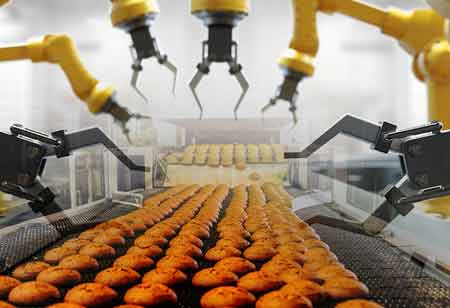THANK YOU FOR SUBSCRIBING
Be first to read the latest tech news, Industry Leader's Insights, and CIO interviews of medium and large enterprises exclusively from Food and Beverage Tech Review
Restaurant Industry facing a Supply Chain Crisis
While customers are swarming to restaurants in masses, the restaurant industry's supply chain issues have persisted in the aftermath of the Covid-19

By
Food and Beverages Tech Review | Wednesday, March 09, 2022
Stay ahead of the industry with exclusive feature stories on the top companies, expert insights and the latest news delivered straight to your inbox. Subscribe today.
Even though recent technological advances that have improved and streamlined communication channels, there are still many gaps in the food supply chain
FREMONT CA: While customers are swarming to restaurants in masses, the restaurant industry's supply chain issues have persisted in the aftermath of the Covid-19 health outbreak. Increasing supply chain problems have made it difficult for business owners, dealers, and operators in the industry as more independents and franchised QSRs, Fast Casual, and full service restaurants reopen to standard capacity. Acquiring replacement parts and new equipment on schedule has been difficult, and keeping up with the growing number of foodservice supply chain delays and interruptions has proven to be a real challenge.
Many foodservice providers have experienced a period of instability, ranging from worker shortages to outright shutdowns. Furthermore, in many marketplaces, the variables and circumstances that drive higher pricing appear to be overpowering. The economic reopening in the United States has been gnarled and uncertain. Inventory levels are low, resulting in large restocking requests and a premium on short-term supply of diverse raw commodities. Supply Chain problems and challenges have increased food costs and dearth of main ingredients, for instance chicken and corn. Supply lines are clogged, resulting in pockets of shortage and increased costs that are ultimately passed on to consumers.
Due to Covid protocols and standards, the supply and demand of international trade using ocean freight has seen significantly time-consuming delivery times. In addition, manpower constraints and vessel limitations have caused delays in normal pickup and delivery procedures in some countries.
Although there are multiple challenges, it also presents opportunities for the industry to develop an infallibility to avert future problems in lieu of carelessly covering the situation. Professional carriers and shippers—growers, suppliers, and manufacturers–must collaborate to address concerns and challenges in the food supply chain in order to achieve their objectives through open communication and transparency.
I agree We use cookies on this website to enhance your user experience. By clicking any link on this page you are giving your consent for us to set cookies. More info







